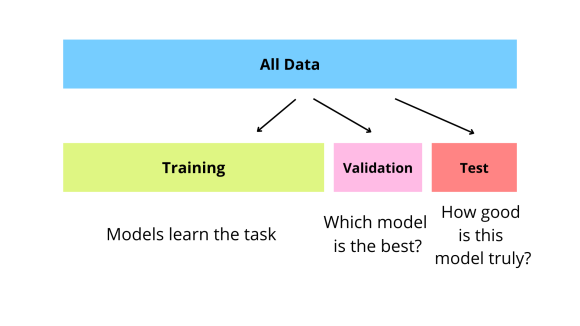Why (Design) Iteration will become the most valuable skill in the age of AI
To understand why AI can't replace you, call it by its' full name
I’m excited to share some new changes coming to my content schedule! Starting this month, I will be publishing twice a week on Wednesdays and Fridays.
Wednesday articles will continue to remain free for all, while most of Friday’s content will be exclusive, paid content. These will dive deeper into advanced topics and provide insights for those looking to elevate their skills even further.
Enjoy this complimentary Friday article, and thank you for your continued support!
-Kai
AI has stirred up controversy in the design community again, this time centered on ConFig.
This convention, run by Figma, has faced criticism for offering Product Managers a new way to "generate designs" with AI, threatening the already fragile design job market. This isn’t the first time AI has caused ripples in our field, and it won’t be the last.
Generate a Design Today! No Designer Needed
Since the release of ChatGPT, there has been a looming fear that many people, including designers and writers, won’t have jobs in the future. From Product Managers to Executives, cool new AI tools market to them with the implicit message of “Replace your Designers/Writers with this today!”
But I know that’s not going to happen. I have more AI experience than most designers: I am a Data-Driven Design expert who happens to specialize in Natural Language Processing (NLP), a subset of AI.
I worked with the Nielsen/Norman Group to redesign a cancer registry application that used NLP to read and convert doctors' and nurses' handwriting into Electronic Medical Records. I've also written about AI and data-informed design for the past four years.
Here’s the blunt truth: when you call AI by its full name, you can see why it can’t replace the entire design process.
AI, or Generative AI, is Only Good for First Drafts
When people talk about AI, they’re usually referring to Generative AI. From ChatGPT and Midjourney to Microsoft Copilot and chatbots, these are all Generative AI tools that work in similar ways.
These AIs work by taking a dataset and dividing it into a “training” and “test” set.
For example, imagine our AI has collected a set of 1,000 homepages from various designers. The AI would take a sample of 600 homepages and “train” their model based on common design patterns such as:
- Top-level navigation
- Image of a human at the top part of the screen
- Logo in the top left
- One big call-to-action button on the homepage
Multiple models may be generated, which are then “validated” against 200 homepages to see which performs the best. Lastly, the model is “tested” against 200 new homepages to see how well it performs.
If it tests well enough, it gets integrated into the AI so that next time someone says “Create a homepage for me,” it’ll use these guidelines to build something.
This process is why companies like Figma and Adobe XD want to use your work to “train their AI”, and why these products focus on how amazing it is to “Create something from scratch in a short time!”
AI might take over this part of the design process, but that’s not really a big deal considering there are hundreds of “template homepages” already available online.
However, calling it “Generative AI” helps you understand why it can’t replace design for one key reason: you never really get the design right the first time.
Design is an Iterative Process, Which AI Cannot Replicate
I have yet to meet a Designer that gets everything right on the first iteration, and AI won’t either.
Great designers understand how to iterate toward a solution. They know, after testing with users, which solutions will work, what changes need to be made, and more.
Generative AI can’t iterate easily. The only method it has is to gather more data: for example, if you had 10,000 homepages instead of 1,000, your model might be slightly better. This isn’t even mentioning that AI, to many Data Scientists, is just the buzzword for the day.
Even then, it can’t iterate better than humans. Paul Fitts, in the 1960s, developed a model of what humans and machines are best at, and the fact that humans are the best at judgment hasn’t changed in 80 years.
This simple fact is Why Design iteration will become the most valuable skill in the age of AI.
Whether it’s translating what users “say” they want into user needs or reading between the lines, this is where humans always excel. So learning to iterate well, and explaining your iterations, will likely become an important part of being a Designer in the future.
Embracing the Future of Design with AI
One of my favorite quotes about AI came from a copyeditor when ChatGPT was released:
It’s not that severe with Designers, but the shift is coming. If you market yourself on quick and beautiful first drafts as your main skill, ConFig showed you that those skills are quickly becoming worthless.
However, “a pretty first draft” is hardly the extent of everything Designers do. AI can’t tell you “Why” it made certain design decisions, nor can it really iterate on existing designs. Those skills, in the age of AI, are likely to become 100x more valuable.
So if you've been afraid of AI taking your job, don’t be. It might take over your 1st draft, but the ability to think like a designer, and iterate, will make you 100x more valuable.
My Maven course on Data-Informed Design is now live! Learn more about using data to communicate more effectively with your team.
Kai Wong is a Senior Product Designer and Creator of the Data and Design newsletter. His book, Data-Informed UX Design, provides 21 small changes you can make to your design process to leverage the power of data and design.





